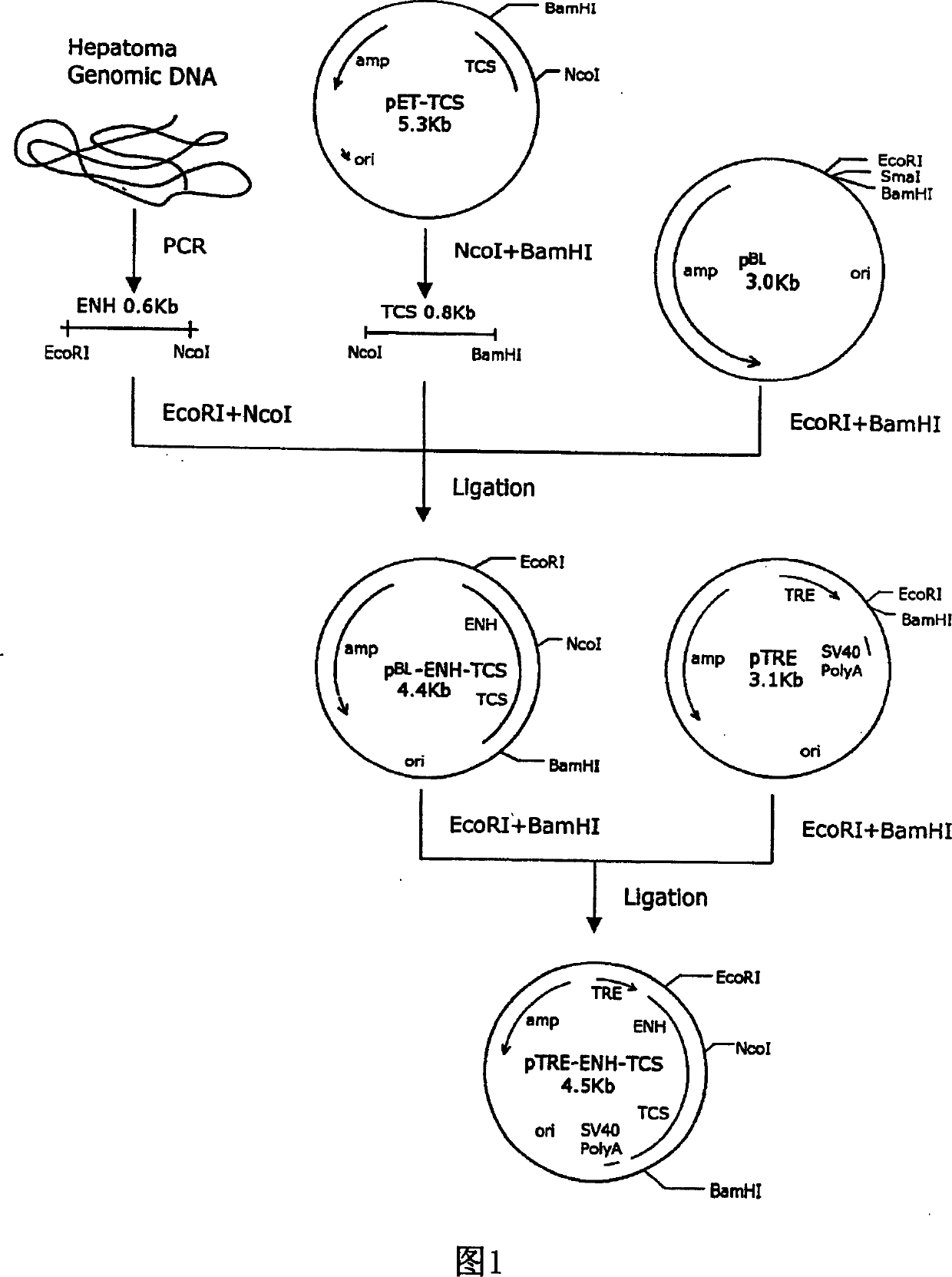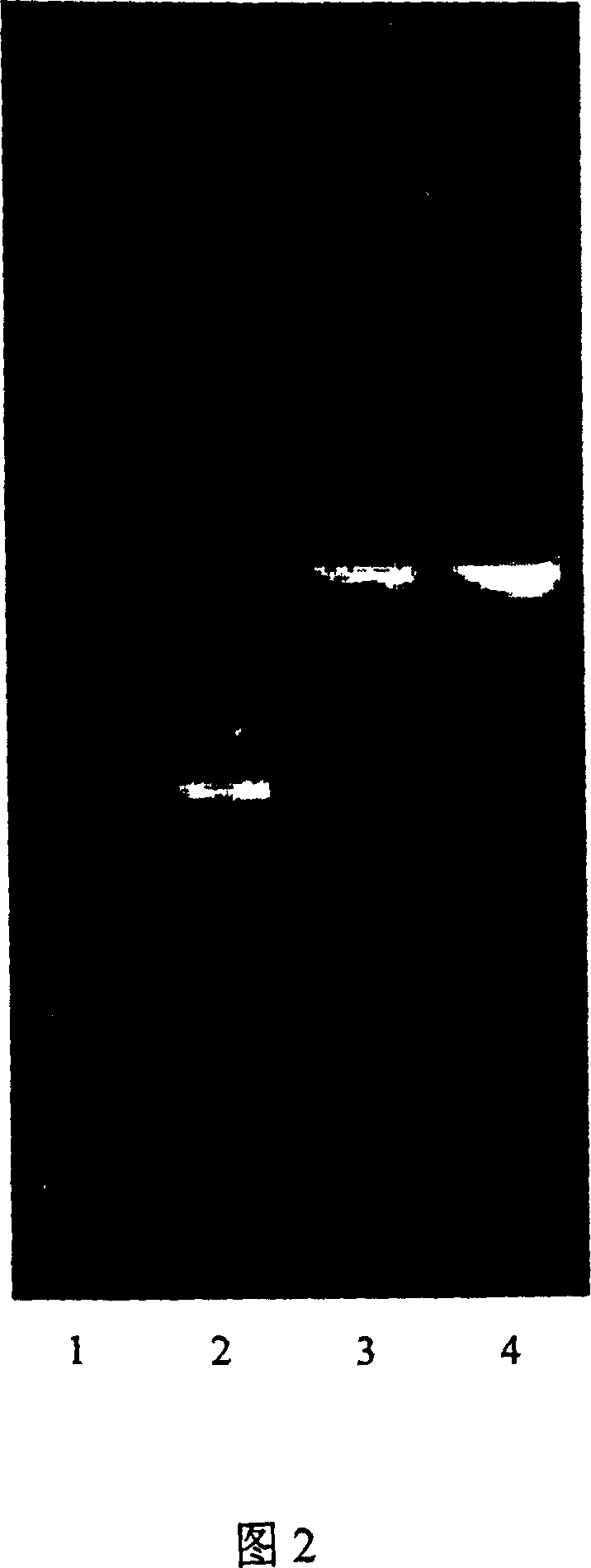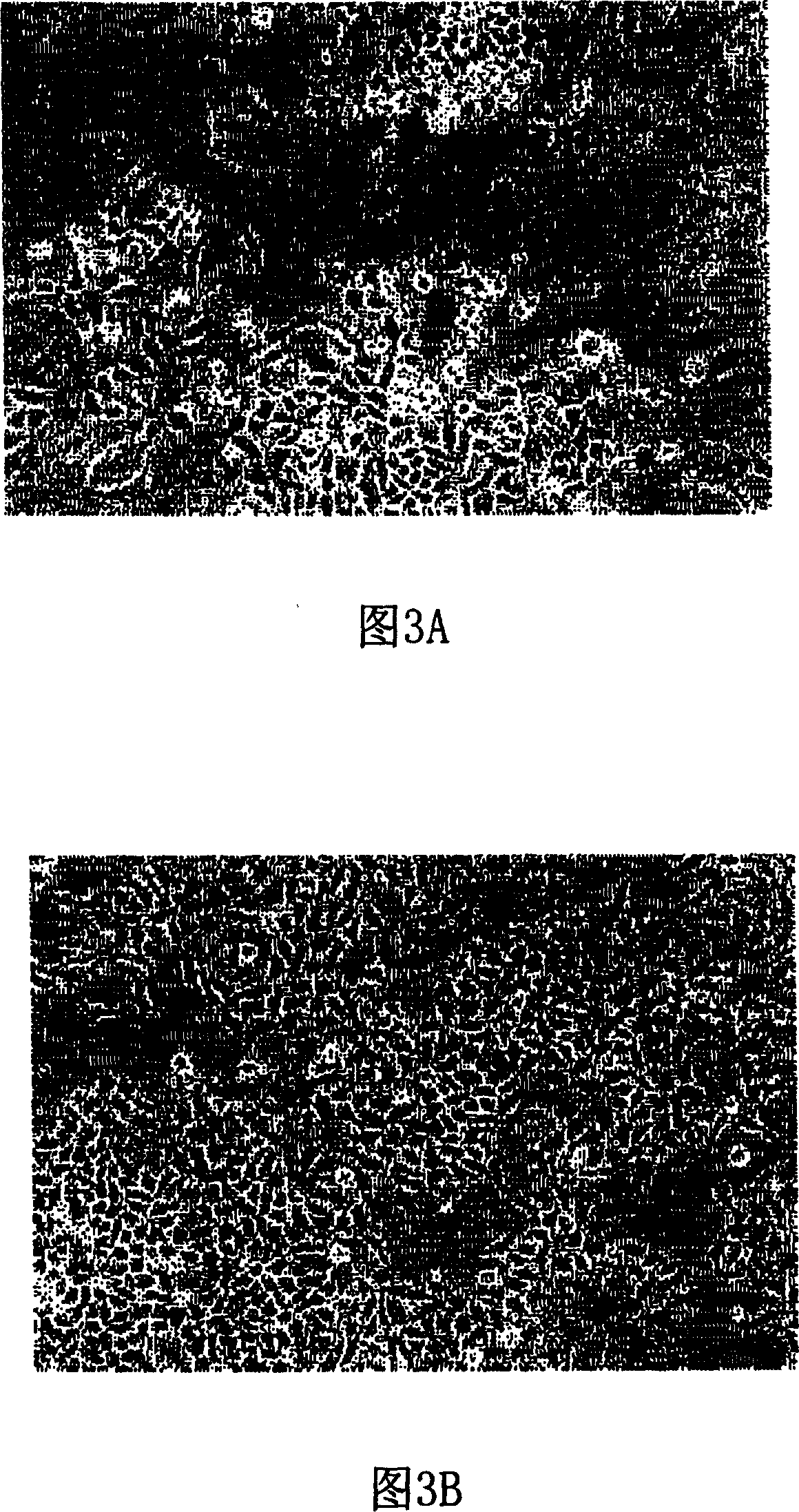Trichosanthin suicide ENH-TCS, recombination vector and application thereof
A technology of trichosanthin and suicide gene, applied in the field of genetic engineering
- Summary
- Abstract
- Description
- Claims
- Application Information
AI Technical Summary
Problems solved by technology
Method used
Image
Examples
Embodiment 1
[0029] Example 1. Construction of expression vector pTRE-ENH-TCS
[0030] DNA extraction, enzyme digestion, purification and recombination were carried out using conventional methods well known to workers in the field of molecular biology; the tool enzymes involved were Gibco BRL products; RNA extraction was performed with Trizol reagent from Huashun Bioengineering Co., Ltd. Kits, reverse transcriptases and related reagents are also products of the center.
[0031] TCS gene: As explained above, the TCS gene can be obtained in a variety of ways. Our group has cloned the corresponding plasmid pET-TCS, (Nie, H.L., X.F.Cai, X.H.He.X.Y.Ke, Y.B.Ke, S.X.Tam, 1998, Position 120-123, a potential active site of trichosanthin. Life Sciences, 62 (6): 491-500), the plasmid can be obtained by double digestion with NcoI and BamHI to obtain a gene fragment of about 0.8 kb, which is purified by low-melting agarose gel electrophoresis.
[0032] Acquisition of AFP gene regulatory element ENH: ...
Embodiment 2
[0040] Example 2. Cell culture and pTRE-ENH-TCS transfection
[0041] Human hepatoma cell line (7721) and human lung adenocarcinoma cells (SPCA-1) were cultured in RM1640 medium containing 10% inactivated calf serum at 37°C and 5% CO2.
[0042] Transfection was performed according to the instructions of the Tet-On kit.
[0043] First, transfect the cells with the plasmid pTet-On provided in the Tet-on system (introduce the Tet On regulatory protein into the cells); culture it in the culture medium containing G418 (Hua Shun Bioengineering Co., Ltd.) in the presence of 400 μg / ml for two months , screened out stable tetracycline response factor, G418-resistant cell clones; the resistant cells continued to culture and proliferate without G418; according to the kit instructions, the plasmids pTRE-ENH-TCS and pTRE-ENH were mixed with Tet-on The plasmid PTK-Hyg provided in the system was co-transfected and introduced into liver cancer cells and lung cancer cells respectively.
[00...
Embodiment 3
[0045] Example 3. Induction and expression of TCS gene in hepatoma cells
[0046] Hepatoma cells and lung cancer cells into which pTRE-ENH-TCS or pTRE-ENH were introduced were added with different concentrations of tetracycline (2μg / ml, 10μg / ml, 50μg / ml) and continued to culture. Control liver cancer cells were also treated in the same way.
[0047] After 24 hours, the liver cancer cells were obviously dead by light microscopy, and the death situation was aggravated after 48 hours; the higher the concentration of tetracycline, the more serious the cell death; the growth of lung cancer cells and control liver cancer cells transfected with empty vector was not affected. obvious impact.
[0048] Figure 3 is an optical microscope photograph (×400) of the growth of hepatoma cells and control cells after induction with 10 μg / ml tetracycline for 24 hours. Figure 4 shows the apoptosis of cells detected by flow cytometry.
[0049] The hepatoma cells induced by tetracycline concentra...
PUM
 Login to View More
Login to View More Abstract
Description
Claims
Application Information
 Login to View More
Login to View More - R&D
- Intellectual Property
- Life Sciences
- Materials
- Tech Scout
- Unparalleled Data Quality
- Higher Quality Content
- 60% Fewer Hallucinations
Browse by: Latest US Patents, China's latest patents, Technical Efficacy Thesaurus, Application Domain, Technology Topic, Popular Technical Reports.
© 2025 PatSnap. All rights reserved.Legal|Privacy policy|Modern Slavery Act Transparency Statement|Sitemap|About US| Contact US: help@patsnap.com



